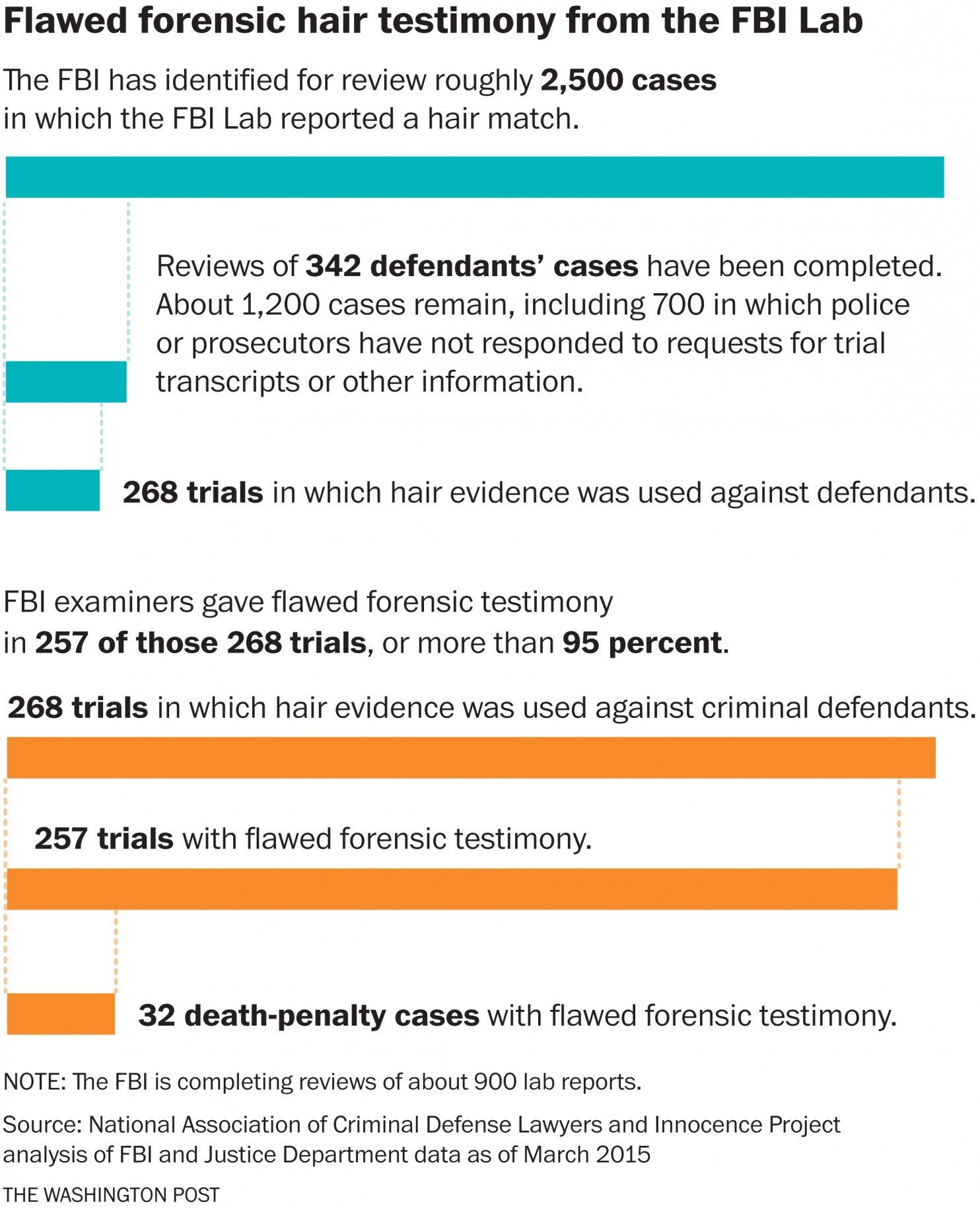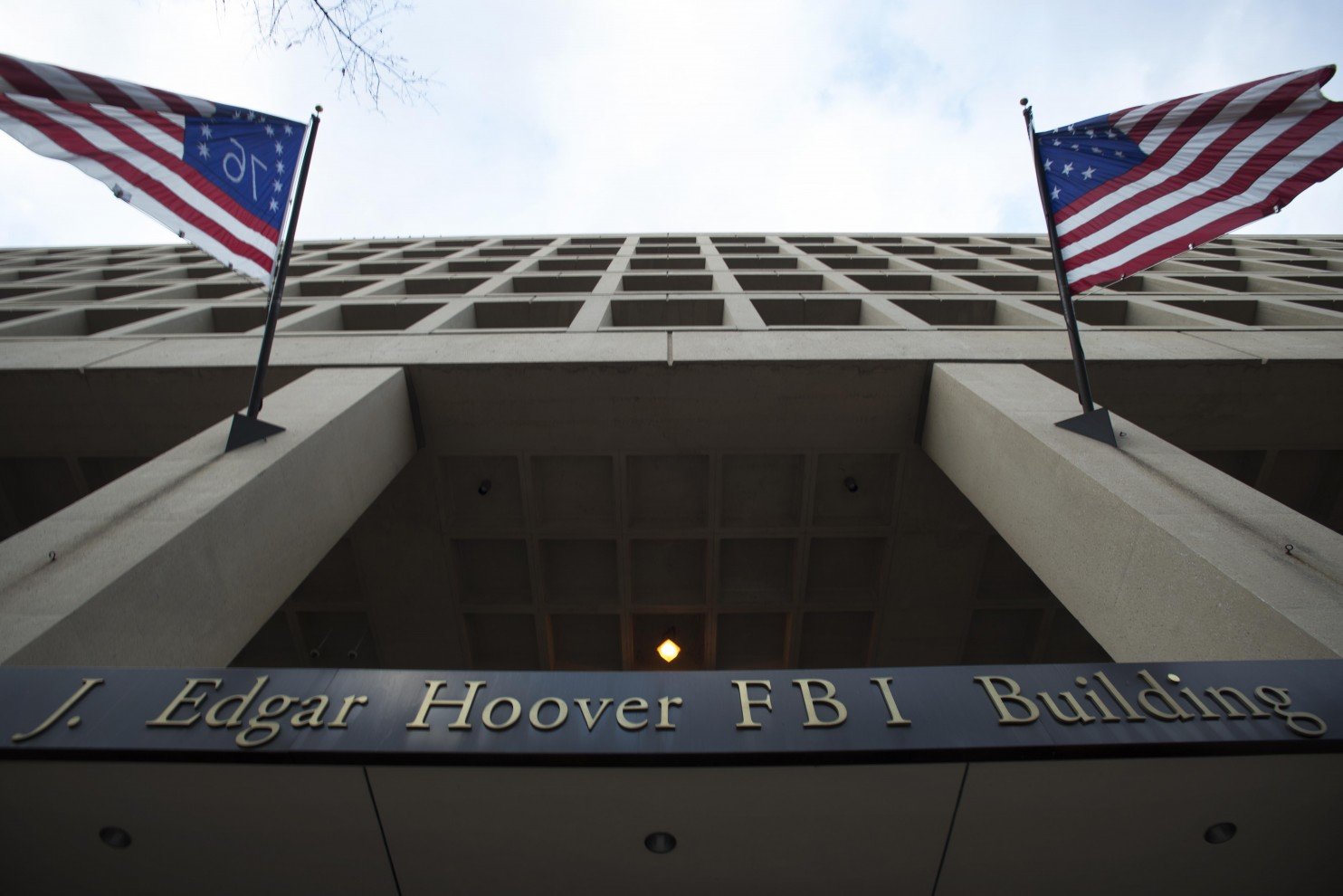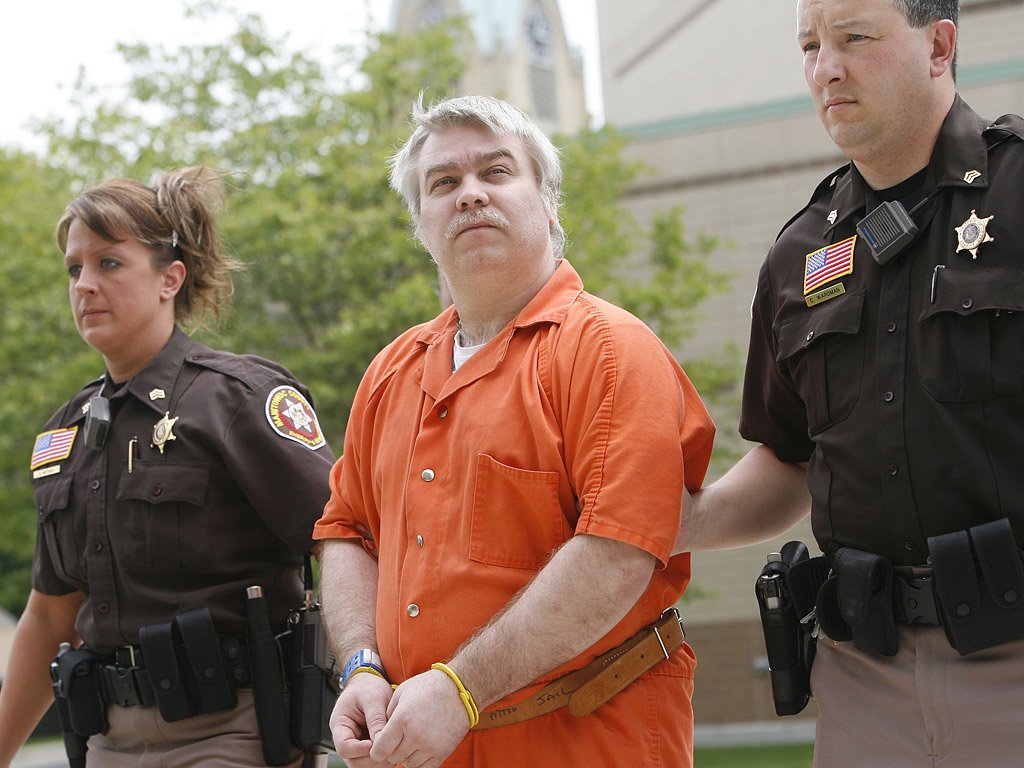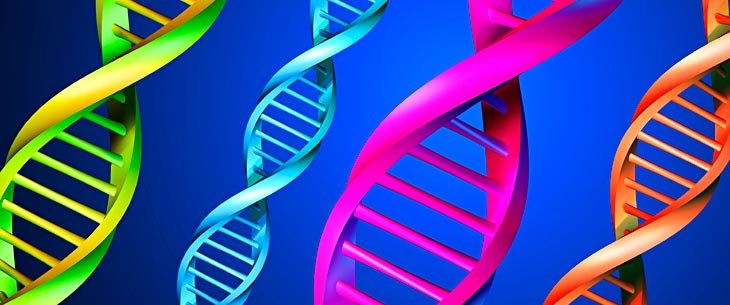In a shocking case of forensic gone bad, the FBI admitted that for over 20 years, it gave flawed hair sample testimony in hundreds of trials. From a review of 342 cases, it was found that 268 cases used hair evidence provided by the FBI. Of those 268 trials, 257 trials had flawed hair testimony. It’s a sad realization, and Sen. Richard Blumenthal (D-Conn.) said it best:
“These findings are appalling and chilling in their indictment of our criminal justice system, not only for potentially innocent defendants who have been wrongly imprisoned and even executed, but for prosecutors who have relied on fabricated and false evidence despite their intentions to faithfully enforce the law.”
Unacceptable mistakes

This is not a single mistake, nor a string of coincidental mistakes – this is a pattern, a case of bad forensic science, and will probably launch one of the biggest forensic scandals in history. So what went wrong? Well, Of 28 examiners with the FBI Laboratory’s microscopic hair comparison unit, 26 overstated forensic matches in ways that favored prosecutors in more than 95 percent of the 268 trials reviewed so far.
This probably wouldn’t have even come to light, had it not been for an investigation conducted by the Washington Post. They might have led to possibly hundreds of wrongful convictions for rape, murder, and other violent crimes, dating back at least to the 1970s. There were no scientifically accepted standards for forensic testing, but FBI experts were still quoted routinely, and almost always testified to the near-certainty of matches. Peter Neufeld, co-founder of the , a non-profit legal clinic which only handles cases where postconviction DNA testing of evidence can yield conclusive proof of innocence seemed furious:
“The FBI’s three-decade use of microscopic hair analysis to incriminate defendants was a complete disaster. We need an exhaustive investigation that looks at how the FBI, state governments that relied on examiners trained by the FBI and the courts allowed this to happen and why it wasn’t stopped much sooner,” Neufeld said.
Out of these cases, some defendants were given the capital sentence, the Post chillingly adds. Sen. Richard Blumenthal (D-Conn.), a former prosecutor, called on the FBI and Justice Department to notify defendants in all 2,500 targeted cases.
“These findings are appalling and chilling in their indictment of our criminal justice system, not only for potentially innocent defendants who have been wrongly imprisoned and even executed, but for prosecutors who have relied on fabricated and false evidence despite their intentions to faithfully enforce the law,” Blumenthal said.
Wrong convictions?
 BI headquarters in Washington. (Bonnie Jo Mount/The Washington Post)
BI headquarters in Washington. (Bonnie Jo Mount/The Washington Post)
This doesn’t mean that the convictions were given solely on the flawed FBI evidence – most cases had other relevant, and in some cases, sufficient evidence, but this does in no way excuse the bureau. The first thing that should happen now is conduct a thorough analysis and see what happened and what went wrong. Senate Judiciary Committee Chairman Charles E. Grassley (R-Iowa) and the panel’s ranking Democrat, Patrick J. Leahy (Vt.), urged the bureau to conduct a “root analysis”, not only to see what went wrong, but also to prevent further problems.
“It is critical that the Bureau identify and address the systemic factors that allowed this far-reaching problem to occur and continue for more than a decade,” the lawmakers wrote FBI Director James B. Comey on March 27, as findings were being finalized.
Defense attorneys say scientifically invalid forensic testimony should be considered as violations of due process, and cast a shadow of a doubt on courts, which can be considered as having held false or misleading testimony. Texas, New York and North Carolina authorities are reviewing their hair examiner cases, with ad hoc efforts underway in about 15 other states. These findings, while massive, are likely only scratching the surface of all the problems associated with FBI forensic evidence. There is no lack of good ideas for reform, but change itself will be left to the organization itself.
University of Virginia law professor Brandon L. Garrett, who has been studying DNA exonerations and wrongful convictions for years told in an email:
“When I looked at forensics in DNA exoneree trials, I found more often than not that the testimony was unscientific and flawed. We know that whenever we look at old criminal cases we see flawed forensics wherever we look. And yet hardly any crime labs have bothered to conduct audits. Nor is the problem limited to bad hair cases—much the same type of eyeballed comparison is done on bite marks, ballistics, fibers, and even fingerprints.”
Pseudoforensics
This is not the first time faux-forensics has lured its head into the courtroom. George Perrot (profiled ) has probably spent 30 years in prison for a crime he didn’t commit. , about whom , was shown in a recent film jamming the suspect’s dental mold into the body of a young victim, also according to Slate.
Oh, and it’s not just about hair and bite marks – , known for his willingness to testify against capital defendants, and . We need to put the science back into the forensics



